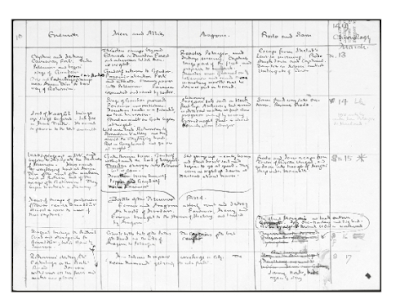On
the Alexandrian, Justin Alexander writes a 2,500-word review that tears
apart the DnD 5e skill system. This appears to have been prompted by the fact that the
One DnD playtest added a rule that 1 is a failure on ALL d20 rolls and a 20 is a auto success (and grants a point of inspiration) on ALL d20 rolls. In the current rules natural 1's and 20's only matter on the to-hit roll. Although myself and others I know apply it to ability checks, saves, and skill checks.
The review is quite detailed in goes into some of the math behind the DnD 5e skill system.
And it misses the entire point of the skill system.
First off for those interested, here is a link from back in the day explaining what bounded accuracy is about and includes a link to the original article from Wizards explaining it.
Are peoples' competencies really as flat in D&D 5e as its math suggests?
What it boils down to is what is the author's view of the fantasy genre? (since DnD 5e is meant to handle various fantasy settings). In DnD case the specific question, is what is a 1st level character is like? What is a 6th level character like? A 12th level character? And so on up to the maximum level the author wants to write about. In 5e's case that is 20th level.
It is not apparent from Justin's review what he views what characters should be doing in non-combat situations at various levels. He references low-level 3.X a lot but doesn't say why. I am left with the impression that he feels somehow the 5e target numbers should match those of low-level 3.5?
For me the 5e authors take is apparent. You start out so-so: 55% success for easy (DC 10), 30% for moderate (DC 15), and 5% for Hard (DC 20). With a +4 attribute bonus and a +2 proficiency, you can get those up to 85% success for easy, 60% for moderate, and 35% for hard. This is at 1st level.
To me, this means the authors feel when it comes to non-combat tasks that 5e 1st level characters have some measure of competence. If your view of the capabilities of first-level characters is not the same then the above isn't going to work for your campaigns.
At 20th level for most characters, the odds shift. Now characters often have a +5 attribute bonus, and a +6 proficiency bonus. You going to automatically succeed at DC 10 (Easy) task. 85% success for DC 15 (Moderate) tasks, and 60% success for DC 20 (Hard) tasks.
If these odds don't reflect what you think 20th-level characters are capable of then 5e isn't going to work out.
Bards and Rogues along with two feats in the later books give expertise. Rogues also have Reliable Talent at 11th level. Expertise doubles the proficiency bonus for some skills. This shifts the odds of success in skill and ability checks considerably.
At 1st level, we are talking about a +10% improvement with any skills that have expertise. At 20th level Rogue and Bards with expertise will automatically succeed on DC 10 (Easy), and DC 15 (Moderate) tasks, and have a 90% chance of success on DC 20 (Hard) tasks.
With Rogues, when they get Reliable Talent at 11th level, the player can declare that they roll a 10 with a skill check. This means they will succeed with everything up to a Hard task?
Justin fail to mention that there are two more task levels DC 25 (Very Hard), and DC 30 (Almost Impossible). A 20th-level Rogue with reliable talent will always succeed at DC 25 task (10 + 17 = 27).
Is this bad? Is this poor math on the designer's part? No, it fits with their view of what Rogues (and Bards) are capable of at 1st, 11th, and 20th level. This is why I put a reference to something that I and others have written back in 2014. To show why 5e authors wrote up the classes and mechanics the way they did.
As for the change in the One DnD playtest, it is more about making the system reflect how hobbyists like you and me actually play 5e rather than trying to fix a non-existent math issue.
If that is not how you view the capabilities of a Rogue or a Bard then 5e isn't going to work for you.
And certainly not for Justin Alexander.




